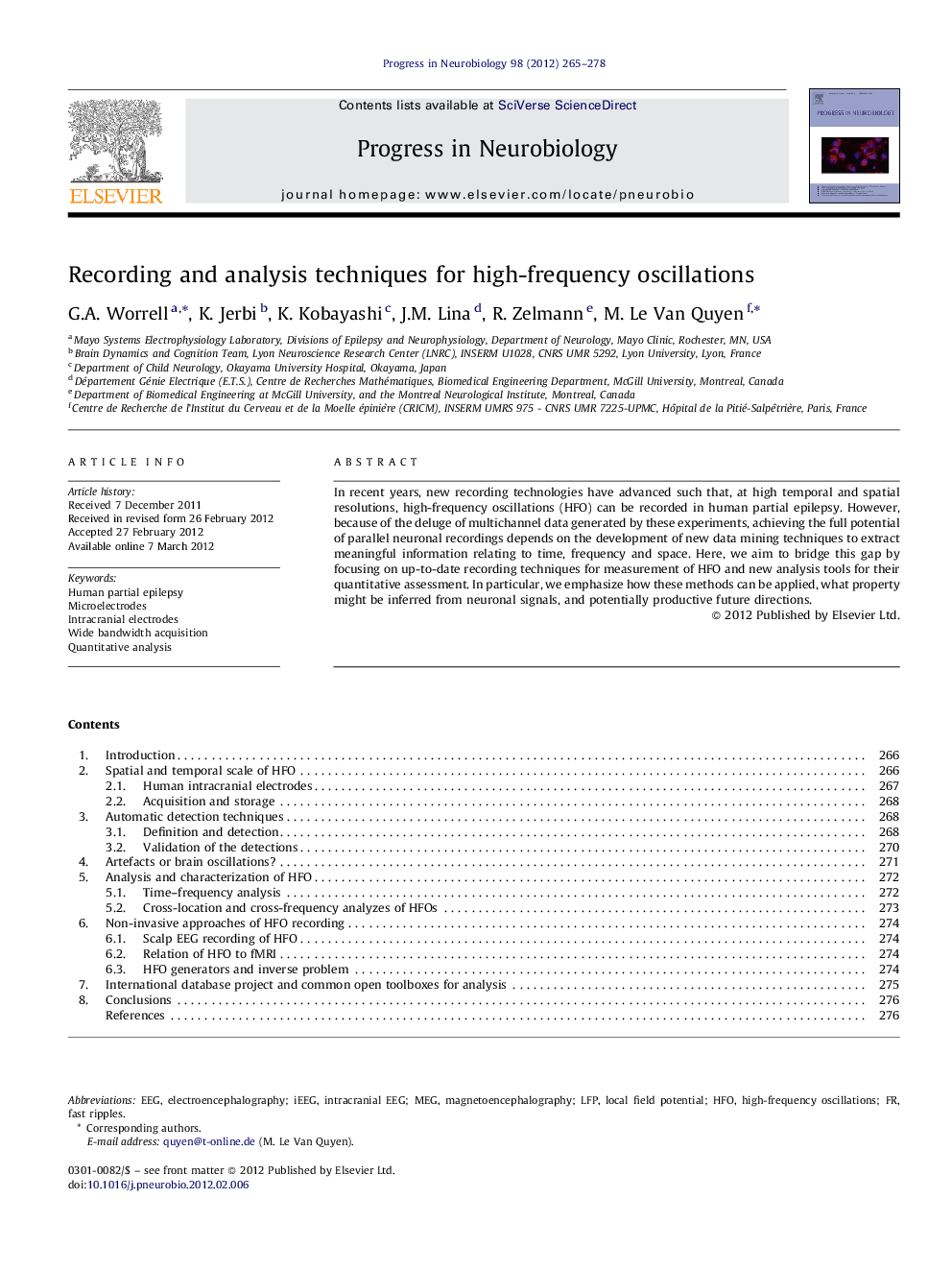| Article ID | Journal | Published Year | Pages | File Type |
|---|---|---|---|---|
| 4353445 | Progress in Neurobiology | 2012 | 14 Pages |
In recent years, new recording technologies have advanced such that, at high temporal and spatial resolutions, high-frequency oscillations (HFO) can be recorded in human partial epilepsy. However, because of the deluge of multichannel data generated by these experiments, achieving the full potential of parallel neuronal recordings depends on the development of new data mining techniques to extract meaningful information relating to time, frequency and space. Here, we aim to bridge this gap by focusing on up-to-date recording techniques for measurement of HFO and new analysis tools for their quantitative assessment. In particular, we emphasize how these methods can be applied, what property might be inferred from neuronal signals, and potentially productive future directions.
► A better understanding of the significance of HFO depends on the development of new recording technologies and data mining that can extract meaningful information from multi-site recordings of local field potentials in human partial epilepsy. ► HFO were first described in human with microelectrodes, suggesting that they are generated by small tissue volumes (<1 mm). Nevertheless, some HFO can be detected using standard clinical intracranial electrodes of contact area greater than 1 mm2, suggesting that networks that generate HFO or through which they propagate can extend volumes of cm3. ► Automatic detection of HFO is crucial for investigation of HFO as biomarkers of epileptogenic tissue, and is likely necessary to propel future clinical applications. ► Recent developments of shared databases and open source toolboxes were reviewed.
